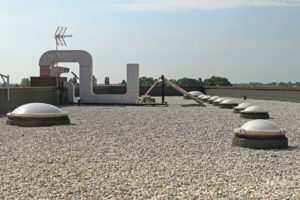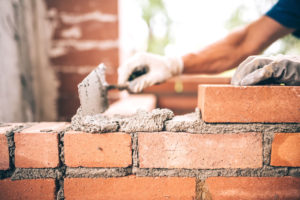Category: Uncategorized
What Is The Process Of Building Restoration?
People frequently use the terms renovation, rehabilitation and restoration interchangeably, although they have distinct meanings.
Renovation involves the transformation of an old and worn out building that requires repairs, more comfort and new amenities, or a recently purchased one, that you want to finish or customize. Rehabilitation consists in bringing a building to its original operating parameters, while restoring refers to making visible the original architecture and finishes.
The restoration consists of a long series of complicated operations, execution times and budgets that sometimes can be bigger than in the case of building a new similar construction. This is because it`s not easy to respect the legal procedures, to find skilled workers, to choose good materials (respecting the budget), to follow the plan and to purchase the right furniture and decorations.
High restoration costs frighten most people who own buildings of historical value because it is necessary to preserve, until the last detail, the architectural style of the past and all the old elements that give personality and value to such buildings.
The restoration goes beyond mere conservation and reveals the aesthetic values of the building, which, for some reason or due to suffered degradations, were no longer visible. Restoration aims to restore the value of a building, and should be completed by a commercial roofing CT restoration company as soon as possible.
Trends in Masonry for 2019 – Colors, Sizes and Textures
Masonry structures are not only durable, but also versatile – they can be used for creating a wide range of building restoration components and they can be freely textured and colored to match their built environment. Masonry has been among the trendiest solutions in architectural design for quite some time and their popularity is likely to increase even further in the future – here are a few of the hottest trends in masonry for 2019:
- Colors – while in the past, masonry components used mostly natural, earth colors, such as shades of brown and terracotta, the dominant trend for next year will be the application of unusual colors, including bright hues, such as reds and blues as well as white, off-white, cream and grey as well as color choices that seem striking at first, such as black;
- Larger bricks of any shape – recent trends are moving in the direction of more rustic designs that use larger components, larger pieces of stone and larger bricks. Regular and irregular shapes are equally fashionable;
- Geometric designs for gardens – structured pathways that use clear, geometric shapes and natural or unusual colors are becoming the trend for stylish gardens of any size – the more rustic and irregular the flowerbeds seem, the more impactful the contrast with the clean shapes of the path.
Commercial Roofing Issues to Look Out For
Commercial roofs are sturdy, resistant and durable structures, but even so, their constant exposure to the elements can wear them down, and require the repair from a licensed commercial roofing Connecticut company. Here are the most common signs of damage, signs that you should pay attention to if you want to maintain your commercial roof in good condition:
- Roof leaks – roofing leaks are very common issues that can be caused by the displacement of a roofing component or can signal a more severe structural problem that should not be neglected;
- Ponding water – this issue typically affects flat roofs and needs immediate attention to prevent more serious issues, such as structural damage, leaks and the general weakening of the roof;
- Punctures – the smaller or larger holes that can appear on membrane roofs are usually caused by impact and by foot traffic and they can seriously weaken the roof, so they need to be addressed immediately when they are discovered;
- Shrinkage – another issue that affects single-ply roofing systems, shrinkage is a process caused by temperature changes and other environmental effects. The signs to look for include flashing pulling away from the wall and the cracking of the membrane;
- Surface erosion, ridging and blistering – also common on single-ply roofs.
Why Masonry Is Great for The Climate in Connecticut
The climate in most part of Connecticut is humid continental, with mild, wet summers and cold, moderately snowy winters, only the coastal areas being humid subtropical, with hot, humid summers and rainy winters and occasionally snow. There are lots of building materials that can rise to the challenges posed by the Connecticut climate, but perhaps none of them is as efficient as masonry – here is why:
- Masonry structures are durable and weather-resistant – if you choose to have a house built from masonry walls, you can be sure that you will be protected against the summer heat as well as against the cold weather in winter;
- Enhanced energy efficiency – masonry walls stay cool in summer and warm in winter, making masonry buildings cheaper to cool and to heat;
- Resistance to termites and rot – masonry walls do not use any wood, which makes them uninteresting for termites. The absence of wood makes masonry walls resistant to rot as well;
- Maintenance-free solutions – other than occasional painting, masonry walls require hardly any maintenance. Masonry walls can be slightly damaged by impact, but the damage can be easily corrected with the help of caulk or mortar;
- Increased value – masonry buildings have a higher resale value than buildings made from other materials and Connecticut masonry professionals are great at what they do.
Things You Never Knew About Masonry
Integrating masonry into your home, either in the form of a fireplace, a wall or a paved pathway through your garden is a great way to add value and beauty to your environment, but masonry is more than adding an attractive décor element or a functional component. Here are a few things that you probably didn’t know about masonry – until now:
- Masonry is resistant to earthquakes, floods and fires – extreme weather leaves no or very little damage on masonry;
- Brick is the oldest man-made building material – masons started using bricks made from clay and baked in the sun around 6,000 years ago;
- Masonry is not only one of the the strongest, but also the most environment-friendly building material available today, and masonry restoration is exquisite;
- Masonry has excellent thermal qualities – it takes long to heat up and when it has absorbed all the heat it could, the heat is released very slowly. These qualities make masonry walls great barriers against heat in summer and will make heating the home cheaper in winter;
- Masonry does not emit toxic gases when they become exposed to fire and they do not emit any volatile gases either, so the houses built from masonry walls are healthier than the homes that use other materials.






















